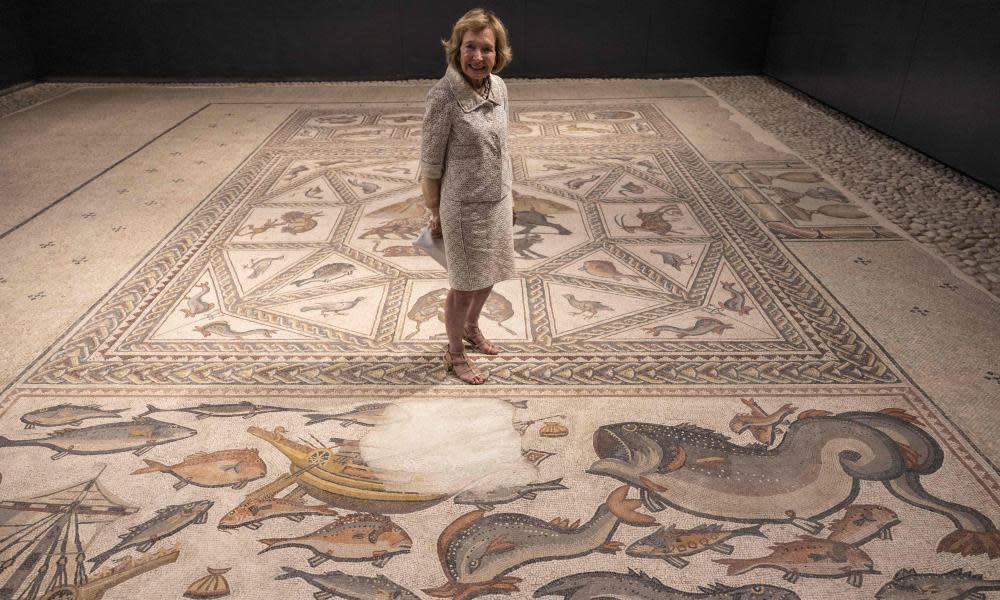Looted artifacts found in Met trustee’s home were bought ‘in good faith’

A major collector of antiquities and benefactor of the Metropolitan Museum of Art took a reputational hit this week as efforts by the Manhattan district attorney to return looted artifacts to their countries of origin moved into high gear.
Shelby White is a Met trustee whose name, with that of her late husband, Leon Levy, hangs over the spectacular Greek and Roman Art galleries at the museum on Fifth Avenue. White also sat on a committee advising the museum on acquisitions.
But White was this week identified by the New York Times as having had 71 looted artifacts removed from her home over the past two years.
Since February, the Manhattan DA, Alvin Bragg, has returned 29 antiquities from White collection’s to Greece, 12 to Turkey, four to Iraq, two to China and one to Yemen. One item retrieved from the Met and returned, a Chinese funerary artifact, was still caked with dirt in its crate.
Concluding an investigation which began with a dawn search of White’s Upper East Side apartment in June 2021, Bragg said 89 antiquities with a value of $69m and originating from 10 different countries had been seized.
It is not suggested that White, 84, or her husband knowingly bought stolen antiquities. In March, Bragg’s office said it “thank[ed] Shelby White for her assistance and cooperation with our investigation”.
The couple’s collecting has been described as naive or careless. Peter Chavkin, White’s lawyer, said in a statement to the Guardian that White and Levy “acquired objects, in good faith, at public auction and from dealers they believed to be reputable”.
From the outset of their collecting, Chavkin said, the couple sought to share their treasures with the public, loaning objects to museums and publishing on their collection extensively.
Where provenance investigations had taken place, the attorney said, “it has always been Ms White’s policy to cooperate fully with these authorities. If an item in her collection was shown to have been wrongfully taken by others, Ms White has expeditiously and voluntarily returned it to its rightful place of origin.”
In a statement, Bragg said: “We will not allow New York City to be a safe harbor for stolen cultural artifacts.”
According to Bragg’s office, since early 2022 an antiquities trafficking unit has repatriated 950 antiquities to 17 countries.
Last year, Matthew Bogdanos, a retired US Marine Corps colonel who runs the Manhattan antiquities unit, told the Guardian dealers, private collectors and museums had for years sat on the fence if the subject of illicit antiquities was raised.
“They’d say, ‘Oh it’s a little dodgy but who cares. Nobody’s looking.’ But people are [now] looking, and they’re saying it’s not worth it.”
In six years, Bogdanos’s office had convicted a dozen people of antiquities trafficking.
“That’s unheard of,” he said. “People who have wings of museums named after them aren’t accustomed to being handcuffed and that has had an impact.”
The most recent episode, and the Times reporting it, has raised questions about the Met, amid an accelerating repatriations process that began in 2008 with the return to Italy of the Sarpedon or Euphronios krater, a wine-mixing bowl crafted by two Athenians, Euxitheos and Euphronios, in the late 6th century BC.
In May, the museum announced the formation of a team of provenance researchers.
“It is incumbent upon the Met to engage more intensively and proactively in examining certain areas of our collection and to increase the resources we dedicate to this ongoing crucial work,” the museum director, Max Hollein, said then.
But establishing the provenance of ancient antiquities can be a difficult process.
“It’s hard enough trying to establish the provenance of a Picasso or a Matisse,” said Charles Stuckey, an art scholar who has worked as curator in major US museums including the Art Institute of Chicago. “So when you get back to archaeological treasures there is extremely little to go on.”
Stuckey suggested that the drive to find and return looted antiquities stems in part from successful efforts to return art looted by Nazis in the 20th century. Attempts to return art to African countries, including the Benin bronzes to Nigeria, are also under way.
Stuckey said the inflation of the value of such objects should not be overlooked.
“Five-thousand-dollar items are now worth multimillions so it’s worth the time of lawyers and police to be involved,” he said.
Stuckey also pointed to the costs that large art institutions carry when storing, handling and collating vast troves of art that in many cases may never go on display. By returning artifacts, Stuckey said, museums are able to negotiate a more favorable relationship with the receiving party, which may let museums borrow items in return.
“It’s understandable that museums would want to take the high road and not fight on the losing side,” Stuckey said. “All things considered, this is best way to stay in the game.”

 Yahoo News
Yahoo News 
